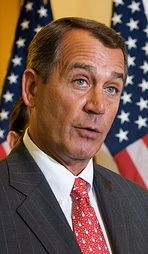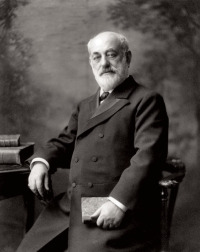
John Boehner
While driving to work yesterday, I heard House Republican leader John Boehner on NPR, claiming — as he has on any number of occasions — that the health-care-reform bill now being considered by the House would allow for “taxpayer-funded abortions.”
Based on the best available evidence, what Boehner said was not true. That he and other health-bill opponents keep getting away with it exposes a flaw in the news media that goes back at least to the days of Joseph McCarthy. That is, journalists regularly report the words of powerful figures, but only rarely challenge them on the facts. It’s just one of the reasons that President Obama’s quest for near-universal health care is hanging by a thread, and could still be defeated.
A bit of review. Last year the House and the Senate both passed health-care-reform bills with language aimed at ensuring that the current ban on federal funding of abortions would remain in place. Pro-life activists claim the House language is tougher, but other observers say the two bills would accomplish the same thing. Here is Secretary of Health and Human Services Kathleen Sebelius in a recent appearance on ABC News’ “This Week”:
The president has said from the outset, we don’t want to change the status quo on abortion funding. Neither the Senate or the House bill has any federal funding for abortion, none. Yes, abortion services are provided, and people will pay out of their own pockets, in both the Senate and the House, but they do it in slightly different ways.
Now, I understand that Sebelius isn’t a neutral analyst. Rep. Bart Stupak, the Democrat who wrote the anti-abortion language that’s in the House bill, says he will oppose the Senate bill, which is under consideration by the House this week. So it’s complicated. Yet there are ample reasons to believe that the concerns Stupak has voiced are wrong, and that, therefore, Boehner and his ilk are exploiting the always-volatile issue of abortion rights for sheer political gain, knowing they can get away with it. Here are three compelling pieces of evidence:
1. The Pulitzer Prize-winning, nonpartisan Web site PolitiFact.com reports that Stupak is just plain wrong — as in “false” — in claiming that every enrollee in the government health-care exchanges that would be created by the proposal would be required to help fund abortion. In addition, PolitiFact notes that the Senate anti-abortion language was written by Sen. Ben Nelson, who’s pro-life. Finally, PolitiFact looks at a claim that a loophole would allow federally funded community health centers to provide abortions as “highly misleading” and “barely true.”
2. A serious pro-life Democrat, Rep. Dale Kildee, announced yesterday that he will support the Senate language after concluding that it will not lead to taxpayer funding of abortions. “I have listened carefully to both sides, sought counsel from my priest, advice from family, friends and constituents, and I have read the Senate abortion language more than a dozen times,” Kildee, who once studied for the priesthood, told the New York Times. “I am convinced that the Senate language maintains the Hyde Amendment, which states that no federal money can be used for abortion.”
3. A coalition representing more than 50,000 Catholic nuns released a letter yesterday supporting the health-care proposal, including the Senate language, thus contradicting a stand taken by the U.S. Conference of Bishops. Have the nuns suddenly become pro-choice? No, they have not, according to the Los Angeles Times. “We agree that there shouldn’t be any federal funding of abortion,” Sister Simone Campbell, the executive director of Network, is quoted as saying. “From our reading of the bill, there isn’t any federal funding of abortion.”
Legalisms aside, New York Times columnist Nicholas Kristof today predicts that the health-care bill, if it becomes law, will lead to a dramatic decrease in the number of abortions, since research has shown that access to health care correlates with fewer abortions.
Since the health-care debate began a year ago, Obama and the Democrats have done a miserable job of explaining the stakes, and the media have largely engaged in their typically mindless “he said/she said” horse-race coverage. When the media do attempt to tease out the truth (as in this CNN “Fact Check”), the results are often muddled with so much fake even-handedness that news consumers are left not knowing what to think.
Perhaps in examining just this small aspect of the debate, we can detect a larger pattern.
Photo (cc) by republicanconference and republished here under a Creative Commons license. Some rights reserved.




